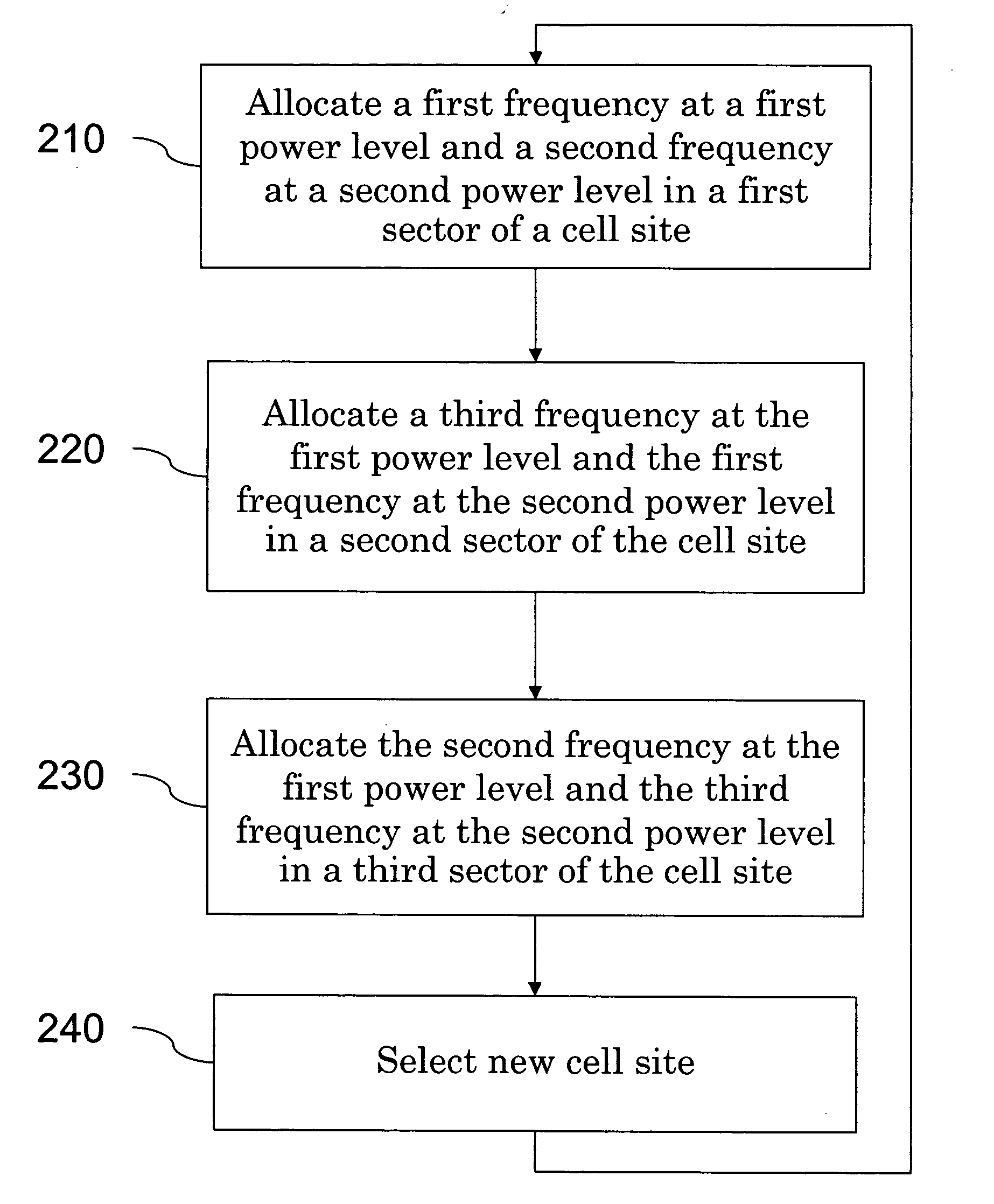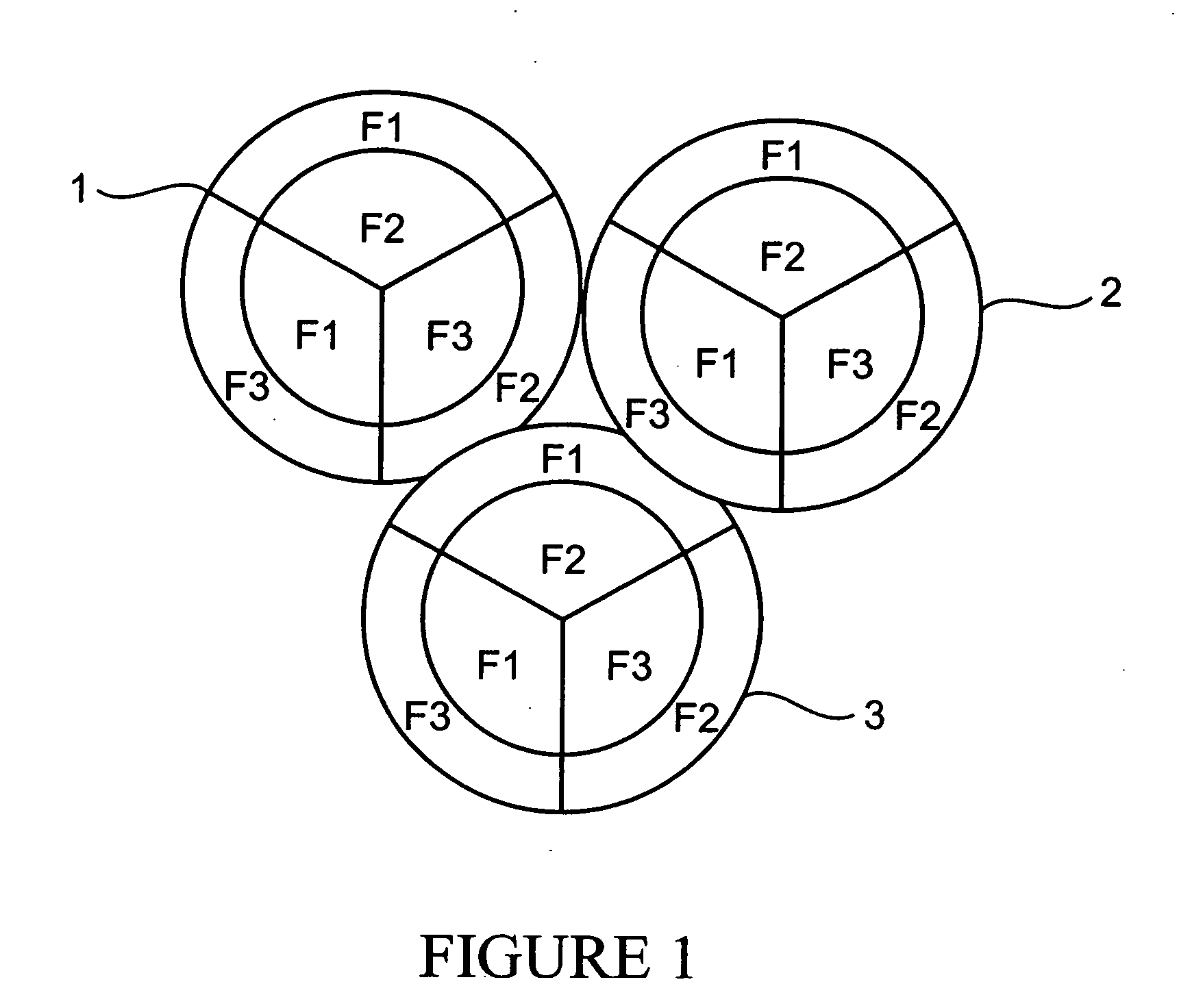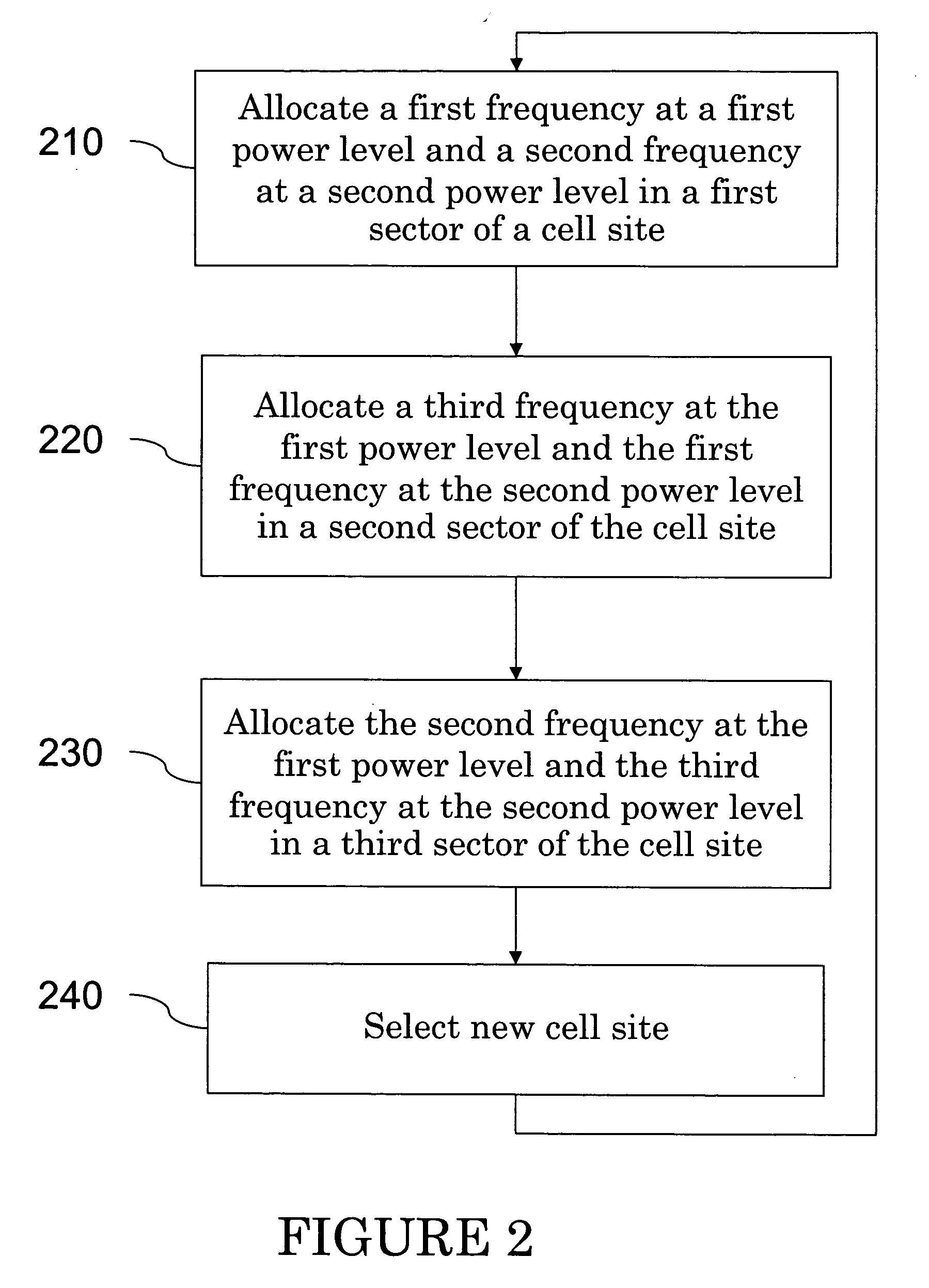Systems and methods for frequency reuse in wireless networks
a wireless network and frequency reuse technology, applied in wireless communication, sustainable buildings, high-level techniques, etc., can solve the problems of low snr and correspondingly low data rates, limiting factors of spectral efficiency, and reducing data rates in these areas. achieve the effect of reducing interference and high spectral efficiency
- Summary
- Abstract
- Description
- Claims
- Application Information
AI Technical Summary
Benefits of technology
Problems solved by technology
Method used
Image
Examples
Embodiment Construction
[0014] As illustrated in FIG. 1, in accordance with exemplary embodiments of the present invention, each cell site is allocated three frequencies, F1, F2 and F3. It should be recognized that as used herein, the term frequency can refer to a single frequency or a number of frequencies constituting a frequency band. The frequencies which are illustrated as providing coverage to the inner portions of the cell site are the lower power frequencies, while those illustrated as providing coverage at the outer portions of the cell site are the higher power frequencies. The difference in power levels between the high and low power frequencies can be, for example, 6 dB. However, depending upon implementation the difference in power levels can be greater than or less than 6 dB. As illustrated in FIG. 1, in cell 1, frequency F1 is transmitted at a higher power in a first sector and at a lower power in a second sector; frequency F2 is transmitted at a higher power in a third sector and at a lower...
PUM
 Login to View More
Login to View More Abstract
Description
Claims
Application Information
 Login to View More
Login to View More - R&D
- Intellectual Property
- Life Sciences
- Materials
- Tech Scout
- Unparalleled Data Quality
- Higher Quality Content
- 60% Fewer Hallucinations
Browse by: Latest US Patents, China's latest patents, Technical Efficacy Thesaurus, Application Domain, Technology Topic, Popular Technical Reports.
© 2025 PatSnap. All rights reserved.Legal|Privacy policy|Modern Slavery Act Transparency Statement|Sitemap|About US| Contact US: help@patsnap.com



